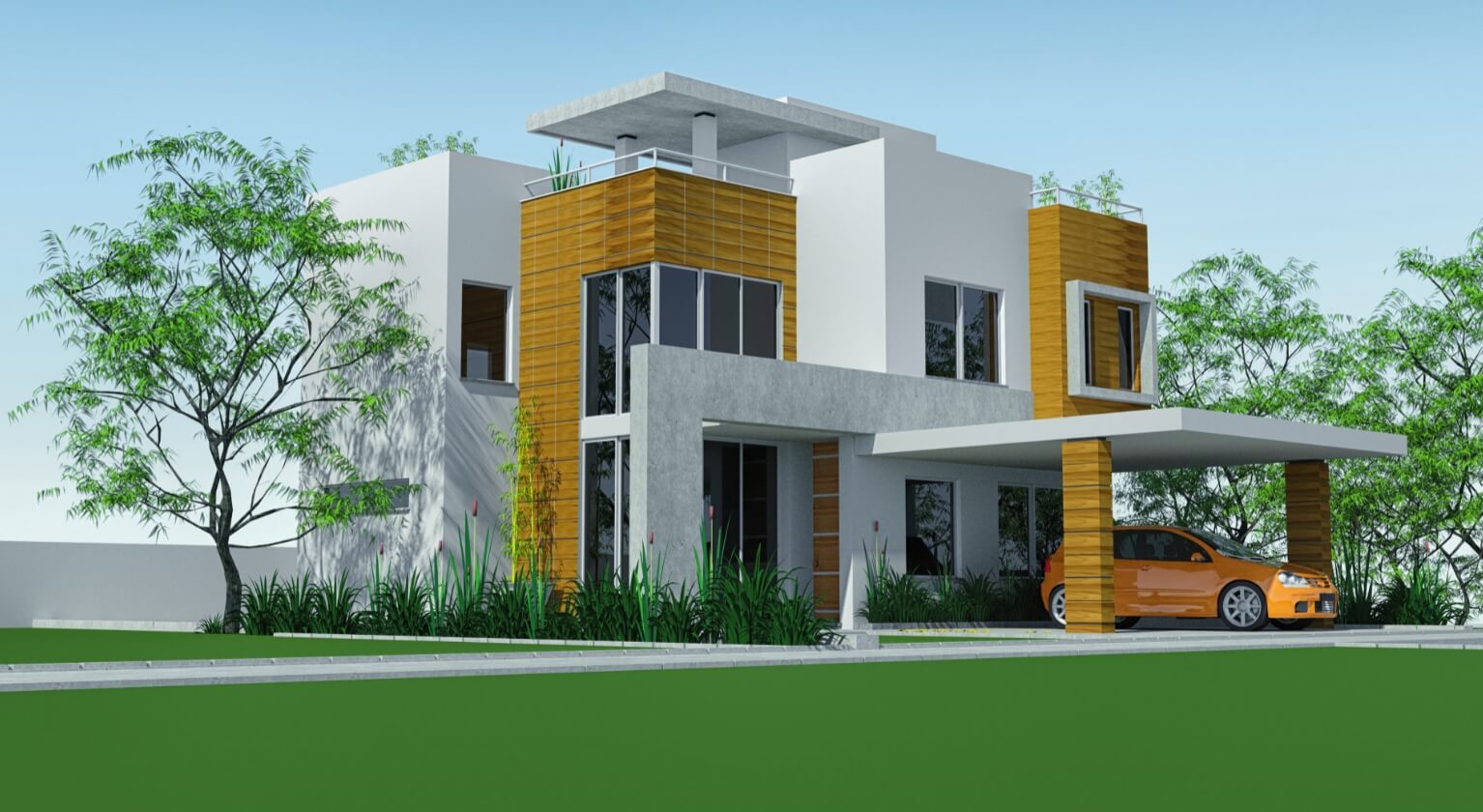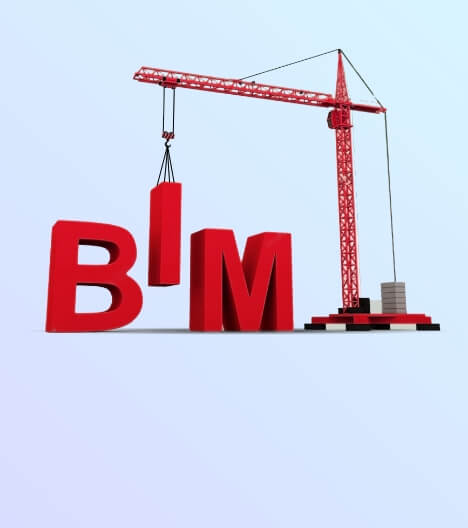 Mahipal Jadeja
Mahipal JadejaRevolutionizing Architectural Projects with BIM Services
 Mahipal Jadeja
Mahipal Jadeja
Send Us Your Requirement
In the ever-evolving landscape of the architecture and construction industry, innovation and the rise in technology have always been a driving force. Over the years, the constant evolution in technology and innovation has accelerated the AEC industry with alterations in working approach, enhanced efficiency, accurate details, and more. Today, in the era where digitalization has overpowered the entire economy, the architecture and construction industry has significantly adapted to the latest trends and innovations that have resulted in the sector’s growth.
As compared to the early methods of the construction process, today, architects and engineers actively work on the project with an enhanced approach that helps to build better design and offers efficient outcomes from the construction project. As a matter of fact, in the fast-paced world of construction, efficiency and accuracy are paramount. This is why the inception of building information technology has been a revolutionary innovation that has altered the reality of the sector.
As the architecture and construction industry evolved over time, BIM gradually became the most crucial aspect of any construction project. Over the years, BIM adoption in AEC has evolved significantly. Early BIM was mainly used for complex infrastructure projects; however, as technology advanced and awareness of BIM services started emerging, it quickly became a go-to technology for every architect and engineer to ensure construction project efficiency and accuracy while adhering to construction project budgets.
Embrace the Next Architectural Project with Accurate BIM Services
Contact Today
Moreover, with a harmonious blend of creativity, innovation, and technical expertise, architectural BIM services emerged as a transformative tool in the architecture and construction industry. The robust approach has allowed AEC professionals to bring their vision to reality with accuracy and efficiency. Additionally, as the construction field continues to evolve, the use of BIM technology gradually becomes prominent due to its long list of benefits that involve streamlining the construction project, efficient and impactful design, ease in complex construction projects, and more. Let’s explore architectural BIM services in detail and how they impact the entire architecture and construction industry.
Understanding Architectural BIM Services
The field of construction and architecture was always complex, involved with various stages, and demanded acute attention and accuracy in each detail. This brings attention to upgrading with technology and innovation. Therefore, the AEC industry gradually adopted the power of BIM, which provided architects, engineers, and other collaborators with room for creativity with sustainable designs, ensuring the budget and the accuracy of design. Emerging as a powerful tool, architectural BIM services involve the creation and management of digital representation of infrastructure.
With the help of BIM, architects and engineers can design a comprehensive 3D model that encompasses every aspect of the structure, including material, structure, stage, components, and more. This data-rich 3D model is an intelligent database containing all the valuable information about the construction project. Additionally, this also helps AEC professionals with enhanced communication, collaboration, decision-making, and ease of use in the project. As a matter of fact, the comprehensive 3D model helps architects visualize and explore different design options, resulting in the creation of optimized energy-efficient designs with safety. Additionally, BIM is a collaborative technology that involves the management of digital representation of the infrastructure’s physical, functional, and practical aspects. Following are the key concepts that summarize BIM
- 3D visualizations
- Parametric Modeling
- Data Integration
- Clash Detection
- Cost Estimation & Quantification
- Lifecycle Management
The process begins with the creation of a digital model that can be shared across various platforms and stakeholders, enabling architects, engineers, and other AEC professionals to have real-time communication and collaboration along with feedback. Moreover, the digital model is also utilized to build accurate and detailed architectural construction documentation, which is pivotal in the construction process. The construction process has various stages, demanding attention, efficiency, and accuracy; the 3D architectural BIM model helps ensure that every construction stage is catered to with accuracy. It can also be used to manage and track the progress of the construction process, identify potential clashes and errors, and more. Following are some of the benefits of architectural BIM services.
Benefits of Architectural BIM Services
Improved Design Quality
Cost and Time-Saving
High-Quality Project Outcomes
Limited Design Conflicts
Collaborative Design Process
Accurate Documentation
Sustainable Construction Design
Reduced Wastage of Materials
Enhanced Accuracy and Efficiency
Increases Productivity and Scope of PreFabrication
These are some of the major benefits; however, hiring a third party for BIM services is always advisable. BIM outsourcing services help in various aspects of the company as the outsourcing services provider ensures the project is delivered on time with precision and efficiency. Moreover, the outsourcing concept comes with various benefits, such as cost-effectiveness, on-time delivery, innovative working approaches, hands-on experts, and more. Besides outsourcing service providers use state-of-the-art technology to ensure the most accurate outcomes. UniquesCADD is a leading architectural CAD and BIM services provider specializing in BIM services with a blend of hand-picked resources and cutting-edge technology.
To get accurate architectural BIM services, it is significant to understand the technology and have knowledge about the software and tools. Software knowledge is one of the primary reasons why architecture and construction firms hire BIM outsourcing services providers. Moreover, as technology advances daily, choosing the right BIM software for the most optimum results is essential. The following are some BIM software used to ensure the most efficient and accurate architectural BIM service results.
Overview of BIM Software for Accurate Architectural BIM Services
Building information modeling is a collaborative approach to designing a digital construction project with multiple aspects of construction. The digital 3D BIM model consists of the smallest details that help architects, engineers, and collaborators maintain the speed and project status, enhance communication, and deliver better design for the infrastructure. However, creating a digital model requires software and a precise toolset to apply the BIM technology accurately. The following are some of the software used by BIM to ensure efficient results.
- Autodesk Revit
- ArchiCAD
- SketchUp
- Rhino
- Tekla Structure
- Navisworks
- Solibri Model Checker
- Lumion
- Enscape
- BIM 360
Various BIM software and tools are available for AEC professionals, and they have unique features and capabilities to deliver architectural BIM services projects with desirable outcomes. In fact, picking the right software and skill set can enhance the construction project with a plethora of benefits.
Last Words
Due to its long list of benefits, BIM technology’s transformative impact on architectural projects is impeccable. Moreover, it has emerged as a paradigm shift in the AEC industry, enabling architects and engineers to express their creativity while meeting the project’s demands.






